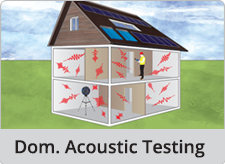Offices Nationwide

Air Testing & Leakage
We can offer additional services at discounted rates along side our tests! These are Sound Testing and Part F. Ask our Consultants for more

The Decibel Scale
Gives an approx of human perception of loudness. This is because the human ear has a logarithmic response to changes in sound level...more
Part F
Means of Ventilation

Chipping Norton - Acoustic Insulation Testing - 020 3390 0301
The office that covers this area is: London
Phone Number: 020 3390 0301 Email: chipping-norton@e2consultants.co.uk
Warning: count(): Parameter must be an array or an object that implements Countable in /data04/elite/public_html/Office.php on line 755
For further Acoustic Insulation Testing information for your area, be sure to check out Sound-Testing-London.co.uk.
Our other services include:
Acoustic Insulation Testing can also be known as:
Sound Testing HMO, Domestic Party Floor Sound Testing, Party Floor Sound Testing, Domestic Party Floor Sound Insulation Testing, Sound Testing Rooms for Residential Purposes, Domestic Reverberation Sound Testing, Domestic Sound Insulation Testing, Domestic Sound Testing Rooms for Residential Purposes, Domestic Acoustic Insulation Testing, Domestic Sound Testing Schools, Sound Testing Hotel, Party Wall Sound Testing, Domestic Sound Testing, Domestic Sound Testing Hotel, Domestic Party Wall Sound Insulation Testing, Domestic BB93 Acoustic Design of Schools, Sound Insulation Testing, Domestic Party Wall Sound Testing, Sound Testing Schools, Party Floor Sound Insulation Testing, Domestic Sound Testing HMO, Reverberation Sound Testing, Sound Testing,


Copyright 2025 E2 Specialist Consultants Limited
Company No. 06728970









































